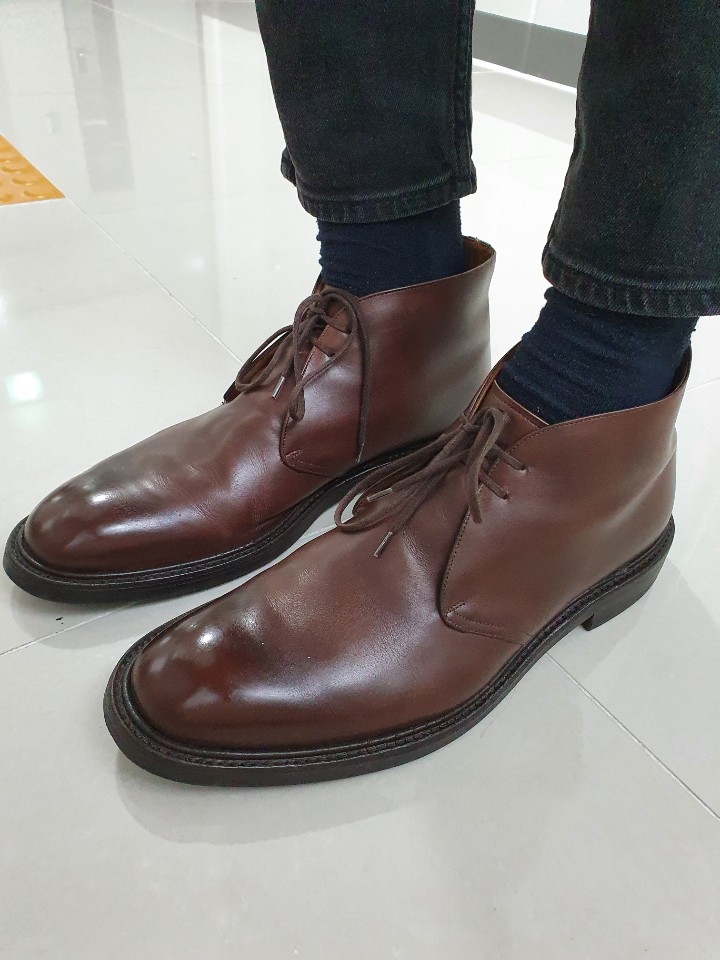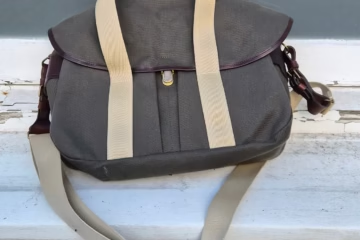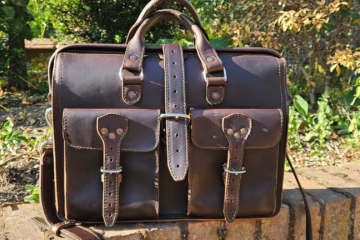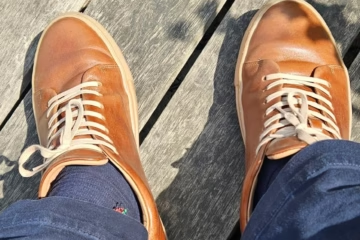Church’s “Tasmania” Chukka Review – A Classic Model Worth Considering
Published by Tom on
With a rich heritage and a reputation for quality, Church’s has earned its place among well-known luxury shoe brands. Founded in 1873 by Thomas Church in Northampton, England, Church’s has a long history of craftsmanship, supplying boots during both World Wars. In 1999, the Prada Group acquired Church’s for around $170 million, sparking debate about whether quality standards have changed. While some enthusiasts believe the quality has declined, I find Church’s shoes to hold up well against other British shoemakers.
In this review, I’ll share my experience with the Church’s Tasmania Chukka Boots, highlighting both their strengths and areas for improvement.
Background
I found my Church’s Tasmania Chukkas on eBay while I was a student at Bristol University. The seller had only tried them on, and they were priced well below retail. When they arrived, I was impressed by their condition—nearly new, with only a small scuff on the right heel. Although the scuff bothered me initially, I treated it with Saphir renovating cream, which worked well to reduce its visibility. Over time, the scuff has blended in even more.
Design and Construction
The Church’s Tasmania Chukka Boots feature two eyelets per shoe, a minimalistic yet functional design. Although I usually prefer a higher eyelet count for a secure fit, these boots surprised me by staying snug. The design consists of three pieces of brown calf leather, giving a classic look that pairs well with various outfits.
Chukka boots, typically crafted from calf leather or suede, were a popular choice in the 1940s and continue to hold appeal. The Tasmania Chukka model from Church’s, though discontinued, can still be found through some retailers. While opinions vary on newer Church’s models, I believe the Tasmania Chukkas maintain a high standard of craftsmanship.
Comfort and Fit
My Tasmania Chukkas are UK size 11G, slightly larger than my usual dress shoe size. I wear a UK 11 (US 12) in sneakers, like Nike and Adidas, but I usually size down for boots. Although I could have opted for a half size smaller, they fit well with thicker socks in winter, and tightening the laces provides a secure fit.
If you’re considering buying these boots, I recommend trying them on in-store. If that’s not possible, choosing your standard sneaker size should work, but going a half size down may offer a snugger fit.
Leather Quality
These boots are made from Nevada leather, a full-grain leather known for its smooth finish and durability. Nevada leather is vacuum or mineral tanned and chrome-free, providing a sustainable option. The smooth texture makes polishing easier, and the leather’s quality is evident in both look and feel.
On a recent rainy day in Seoul, I wore these boots and found them impressively waterproof, a feature not all leather boots can boast. The interior lining is also made from calf leather, adding to the boots’ comfort and durability.

Soles and Welt
The Tasmania Chukkas feature Dainite soles, which are Goodyear welted. I appreciate Dainite soles for their durability and practicality, especially in climates like Korea, where summers are hot and wet, and winters bring snow and ice. The Goodyear welt construction also makes resoling possible, extending the boots’ lifespan.
The soles on my pair seem to be storm welted, although it’s not explicitly stated. Some variations of this model come with leather soles, so check product descriptions if you’re purchasing online
Final Thoughts
In my opinion, the Church’s Tasmania Chukka Boots showcase excellent craftsmanship and durability. They required a break-in period, which initially caused some discomfort, but now fit comfortably as the cork footbed has molded to my feet.
While some people debate the impact of Prada’s acquisition, I find my Church’s Tasmania Chukkas impressive and would recommend them to anyone seeking a high-quality pair of boots. If this model is reflective of Church’s overall quality, I’d be open to exploring other options from their lineup.


